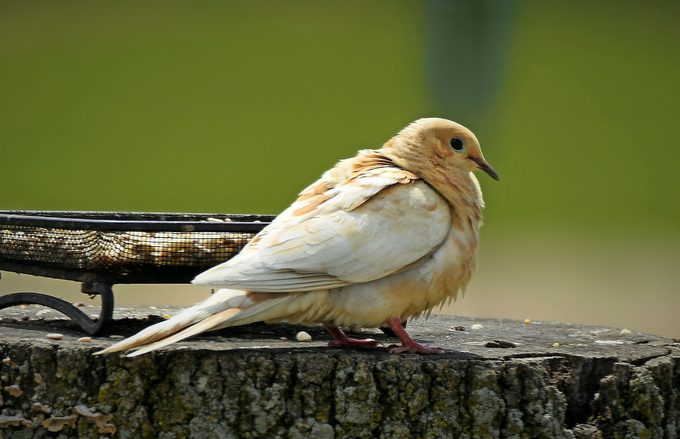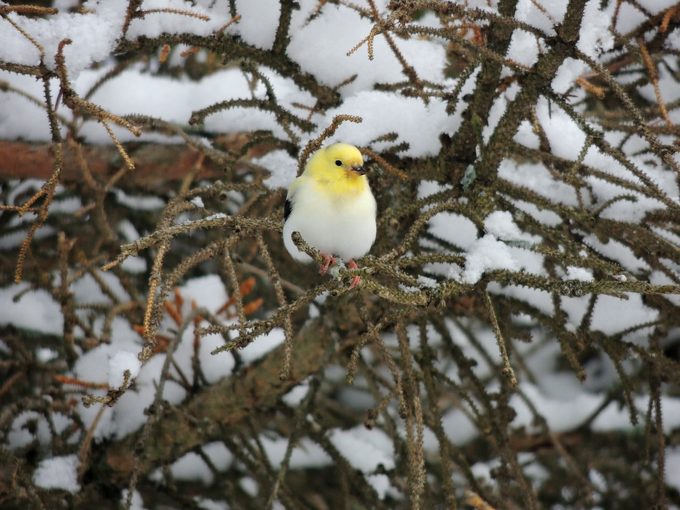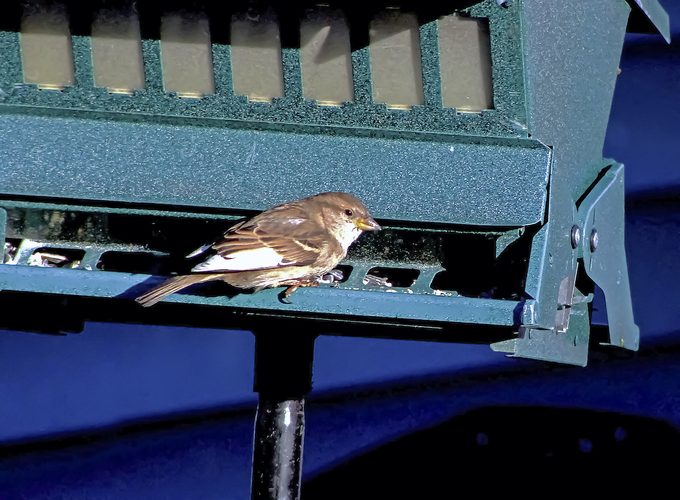Spotted a white dove? Learn how to tell if you’re seeing an albino mourning dove. Plus, see other backyard birds with unusual white feathers.
If you’ve ever noticed a mourning dove that looks different with white splotches or patches of all-white feathers, does that mean it’s an albino dove? Read on for expert advice to identify a white mourning dove and other uniquely colored backyard birds.
Leucistic bird vs albino bird: learn the difference.
White Mourning Dove: Albino or Leucistic?

“An unusual dove (above) has frequented my feeder for two years. Can you identify it?” asks Birds & Blooms reader Marla Neiss of Navarre, Ohio.
This unique and lovely creature is not an albino mourning dove; it is a leucistic form of a mourning dove. Leucism is a reduction or lack of certain pigments in the plumage, and it can be expressed in various ways. Sometimes a bird has pure white feathers (all over or in patches), and sometimes the colors just seem diluted or paler than normal.
Learn how to identify a white-winged dove.
This individual dove seems to have both of those effects going on, leading to the pattern seen in your photo, with mostly white wings and pale fawn-brown body.
Is This an Albino Goldfinch?

“I tried a new goldfinch food made with thistle and other tiny seeds, and it attracted this beauty. Is it an albino goldfinch?” asks Sunde Sheckler of Sparta, Michigan.
Isn’t it fun to find one of our more familiar birds with odd-looking plumage? Your lovely visitor is indeed an American goldfinch, and something unusual is going on with the pigment in its feathers. It appears to have black in the normal areas of the wings and tail, and it still shows some of the yellow, but it’s white in many areas that normally would be buff or brown in winter. When a bird is lacking some of those pigments, it is said to be partly leucistic (pronouced loo-KIS-tick).
Are albino and leucistic robins rare?
Leucistic House Sparrow

“What kind of bird is this?” asks Kathleen Tincher of Hoffman Estates, Illinois.
A bird like this is genuinely confusing because you won’t find a picture of another individual that looks exactly like it. That’s because the bird is leucistic, which means that it lacks melanin pigments in some of its feathers. Some of the normal colors are replaced with white. If we ignore the extra white patches on the wings, throat and elsewhere, it has the shape, color and markings of a female house sparrow.
Next, don’t miss pictures of rare white hummingbirds.








